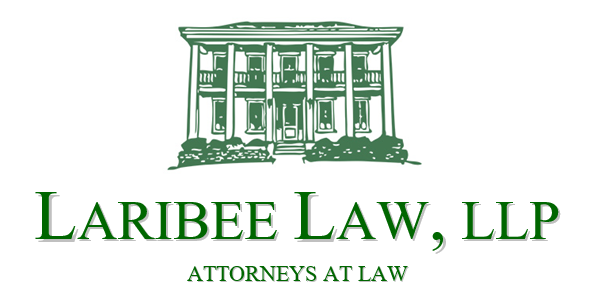Ohio’s Financial Responsibility Law: Will It Protect Your Assets?
Michael L. Laribee, Esq.
When meeting clients for estate planning matters, we usually have a discussion about debts or claims which may jeopardize the clients’ assets. Do the clients owe large sums of money? Are there judgments against the client? Are there creditors who can seize the client’s assets? One very common concern: claims for injuries or property damage sustained in vehicle accidents. Sadly, many people don’t carry sufficient insurance to adequately protect their assets. Some drivers don’t even know their policy limits.
Ohio’s Financial Responsibility Law requires every driver who operates a motor vehicle in this state to maintain financial responsibility to cover damages from accidents. Drivers must have insurance with at least the following minimum limits: $25,000 for bodily injury to or death of one person in any one accident; $50,000 for bodily injury to or death of two or more persons in any one accident; and, $25,000 for injury to property of others in any one accident.
Bodily injury liability covers any expenses related to injury of the driver or passengers. This includes medical bills, emergency transport costs, therapy costs, medical equipment, pain and suffering, and lost wages. Property damage liability covers damages to other cars, mailboxes, and physical structures.
Although these minimum limits were increased in December 2013, it is our opinion that they are woefully low. We have seen medical bills far exceed these limits in just one day of emergency treatment. Serious injuries or death could result in liability in excess of hundreds of thousands of dollars.
If a driver causes an accident and the resulting damages exceed their insurance limits, the driver is responsible for paying the excess cost over the insurance coverage. The driver’s personal assets are subject to attachment and seizure if the injured party obtains a judgment against them in court. Basically, a momentary lapse of judgment while driving can forever alter a family’s accumulated wealth.
Another major concern is the large number of uninsured or underinsured drivers on the road. Some studies report the number of uninsured drivers to be 13% nationally. It is very important that drivers carry sufficient insurance to cover their own injuries if they (or their family passengers) are injured by someone without insurance or with the state minimum coverage.
Sufficient coverage will vary depending on each driver’s individual financial status. However, a policy with limits of $500,000 is certainly a good start. Plus, insurance carriers offer umbrella polices which provide coverage of $1 million or more above the base policy limits. These umbrella policies are surprising affordable. It is important to make sure the umbrella coverage applies to uninsured or underinsured claims as well as liability to others.
Don’t jeopardize your estate plan with insufficient insurance. Further, there are certain options, like irrevocable asset protection trusts, which can further shield assets from creditors. Contact Laribee Law, LLP to review your current insurance policies and your estate plan.
This article is intended to provide general information about the law. It is not intended to give legal advice. Readers are urged to seek advice from an attorney regarding their specific issues and rights. To contact an attorney at Laribee Law, LLP, request more information about our legal services today.
Michael Laribee is a partner in the Medina law firm Laribee Law, LLP. This article is intended to provide general information about the law. It is not intended to give legal advice. Readers are urged to seek advice from an attorney regarding their specific issues and rights.
Need a lawyer or have legal questions? Contact Attorneys in Medina from Laribee Law, LLP.


